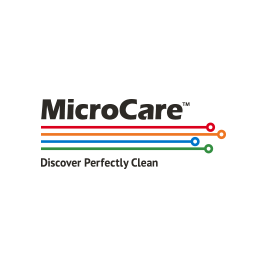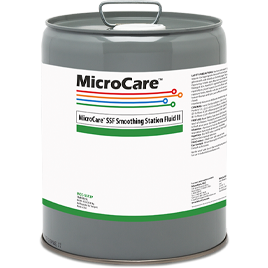MicroCare™ SSF2 Smoothing Station Fluid
Product Information
MicroCare Smoothing Station Fluid II is a nonflammable fluid consisting of a hydrofluoroether and trans-1,2-dichloroethylene. It is formulated to replace n-propyl bromide and trichloroethylene when used in 3D Printing machines for smoothing. For specifics on how to use this material with your 3D printer, please refer to your machine owners manual or contact its manufacturer.
Applications:
- Smooth and remove surface irregularities in geometries generated in a 3D printer
- Dissolve oils, greases, waxes and cutting fluids
Features:
- Enhanced solvency for a wide range of substrates
- Compatible with metals - contact with highly basic materials, pH 10 and above, is not recommended
- Listed as “Acceptable” by the U.S. Environmental Protection Agency (EPA) under the Significant New Alternatives Policy (SNAP) program as a substitute for ozone depleting substances in the solvent category
Product Details
Product Image |
Part Number | Package | Weight | Size | Technical Data Sheet | Safety Data Sheet |
|---|---|---|---|---|---|---|

|
SSF2L MCC-SSF2L | Glass (Sample Only) | 1.36 kg 3 lbs. | 1 L 1 Quart | ||

|
SSF2P MCC-SSF2P | Pail | 20.4 kg 45 lbs. | 19 L 5 Gallons |
| Part Number | MCC-SSF2L | MCC-SSF2P |
|---|---|---|
| Package | Glass (Sample Only) | Pail |
| Weight | 1.36 kg 3 lbs. | 20.4 kg 45 lbs. |
| Size | 1 L 1 Quart | 19 L 5 Gallons |
| Technical Data Sheet | ||
| Safety Data Sheet |
Scroll
| Appearance | Clear Colorless |
|---|---|
| Odor | Slight |
| Chemical Family | Hydrofluoroether |
| Evaporation Rate | Fast |
| Flashpoint | None |
| Global Warming Rating (100yr) | 11 |
| VOC Organic Content (g/L) | 1209 |
| Ozone Impact | Zero |
| Safety Rating | Non-flammable |


